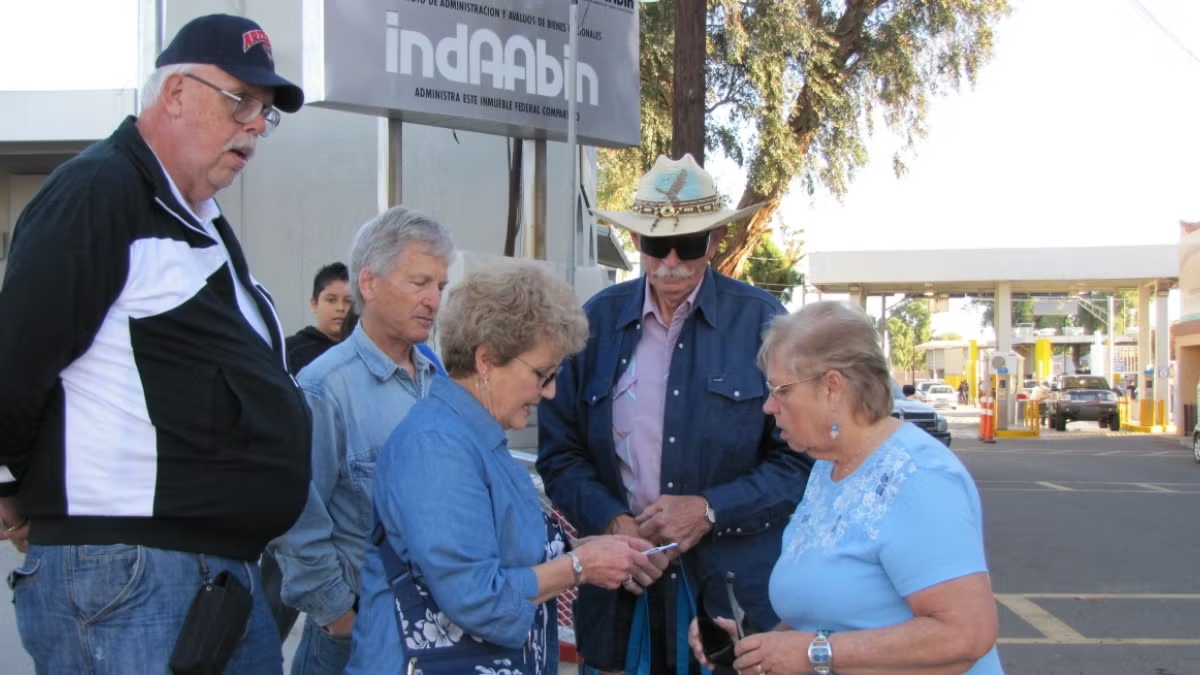Why tourists love borders

Winter visitors in the Mexican city of Los Algodones south of the California-Arizona border. Photo courtesy of Fronteras Project
To some, borders are a line on a map. To tourism researchers such as Dallen Timothy, borders offer a fascinating insight into economic development, culture and politics.
Timothy analyzes the role borders play in tourism.
“Borders really can attract tourism and tourists,” Timothy said. “They can be considerable tourist destinations when we're talking specifically about the borderlands, which are areas adjacent to borders where you have things like lower taxes, more permissive rules and regulations and product diversity.”
A political and cultural geographer by training, Timothy is a professor at the ASU School of Community Resources and Development in the College of Public Service and Community Solutions on the Downtown Phoenix campus. He’s also a researcher in the school’s Center for Sustainable Tourism. The center examines how tourism marketing, planning and development affects economic development and natural and cultural resources.
Shopping, dining and recreation are just some of the reasons why tourists are attracted to borders.
“So, medical, gambling, prostitution and shopping are big borderland attractions, but the borderline itself is a curiosity,” Timothy said. “In some places people are interested in the contrast between, say, the east and the west, or communism versus capitalism or the way that borders are marked with towers, fences, historic markers or archways.”
The ASU professor estimates he’s visited or worked in 120 countries. He prefers crossing borders by land and makes a point to document them.
“Every time we cross the border I have to pull the car over, take pictures of the old border stones, the border markers, the survey markers,” Timothy said. “Because to me — I’m what’s called a literalist — I really want to know where the exact border line is, and I find it.”
Timothy planned his first trip to an international border as an 11-year old growing up in southern Utah. He and his father drove to Sonora, Mexico.
“That border crossing experience was quite influential for me,” Timothy said. “Ever since then — and being a geographer — I’m very interested in political boundaries and how they affect political mobility, how they affect economic development or hinder it.”
He is currently researching medical tourism along the U.S.-Mexico border. Americans have been crossing the Mexican border for years to save money on prescription drugs or dental procedures. Now, Timothy says high end resort-like hospitals are catering to Americans seeking medical and plastic surgery.
“They are actually building hospitals specifically for American medical tourists who will come, get enlargements or reductions here and there, stay for a couple weeks, and it becomes a resort hospital,” he said.
The move to attract tourists who can afford to spend money comes as communities along the Mexico border try to recover after previous years of decline. The number of Americans visiting Mexico began dropping in 2006. That’s when the Mexican government crackdown on drug cartels led to an unprecedented increase in murders, primarily in border states. The Great Recession exacerbated the problem as Americans had less money and reason to cross the border. The impact to border communities that relied on tourism was profound.
“We see a lot of the merchants on the Mexican side have really gone belly up,” Timothy said. “The poverty level has increased. Fewer people are employed.”
Tourism is flourishing in Mexico again. But, much of that travel, according to the U.S. Department of Commerce, is to interior destinations that feature resorts. Border cities still lag behind.
Timothy has three tips for those considering travel to Mexico:
1. If you’re going to a border region, go ahead and cross the border and soak up the culture.
2. Do your own research about the safety of the destination you’re headed. Don’t just rely on media reports.
3. Make sure you have all your documentation in order before you go. This avoids any hassles that may result if you don’t.
More Local, national and global affairs
Arizona nonprofits eager for guidance to address changing federal policies, ASU report finds
In the weeks following a series of executive orders reducing federal funding, including grants to nonprofits, Arizona State…

Watts College launches program to fill jobs created by pending public service retirements
Within the next decade, a “silver tsunami” of employees will retire from public service, according to Arizona State University…

How ASU research is helping first responders
Arizona State University’s faculty members are studying how to improve the jobs, health and well-being of first responders, and…

